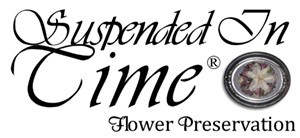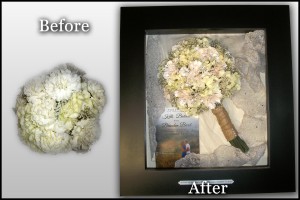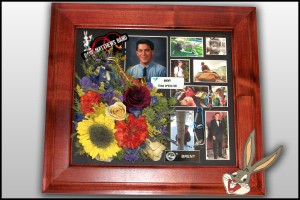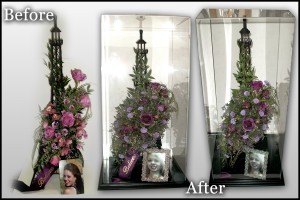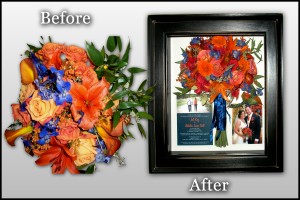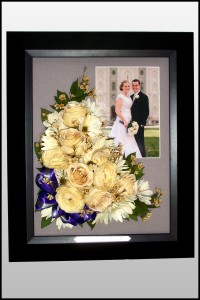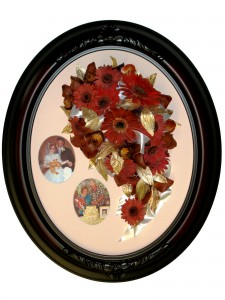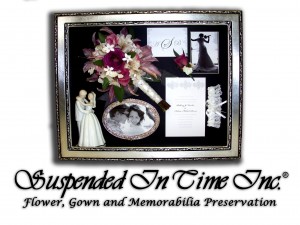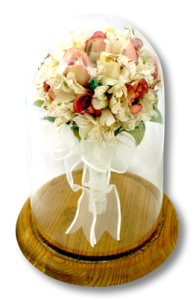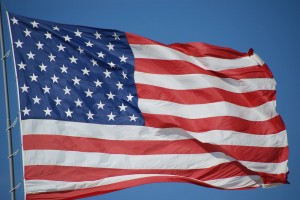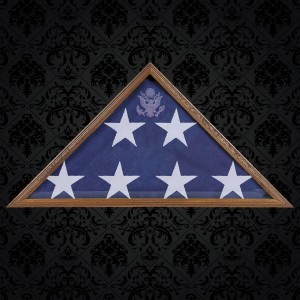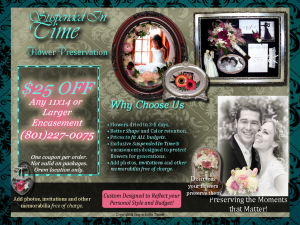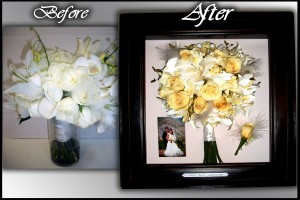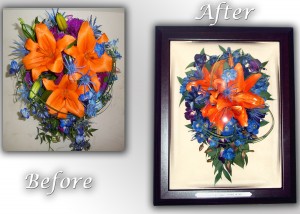 The Suspended In Time® drying and preservation process helps to keep every aspect of the bridal bouquet looking as gorgeous as the day it was made, not only for a short time, but for generations to come. Call (801)227-0075 for more information on how to dry your flowers or learn how to own your own franchise.
The Suspended In Time® drying and preservation process helps to keep every aspect of the bridal bouquet looking as gorgeous as the day it was made, not only for a short time, but for generations to come. Call (801)227-0075 for more information on how to dry your flowers or learn how to own your own franchise.
Tag Archives: feathers with flowers
Custom Designed Flower Preservation Encasements
Each encasement is custom designed to reflect your personal style. You can include your photos, invitation, garter, tiara, toasting glasses, grooms boutonniere or any other special items.
Plan now to preserve your flowers and have them picked up while they are still fresh. If your wedding has already passed, it is not too late. The services we offer are preserve wedding bouquet, how to dry flowers, dry wedding bouquet and much more! Contact your nearest dealer today! (801)227-0075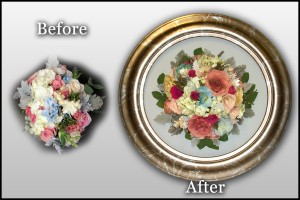
Nicole Barron Bridal Bouquet Preserved
Each encasement is custom designed to reflect your personal style. You can include your photos, invitation, garter, tiara, toasting glasses, grooms boutonniere or any other special items.
Plan now to preserve your flowers and have them picked up while they are still fresh. If your wedding has already passed, it is not too late. The services we offer are preserve wedding bouquet, how to dry flowers, dry wedding bouquet and much more! Contact your nearest dealer today!
Evelyn O’Dell Encasement for Her Much Loved Son Brent O’Dell
Evelyn O’Dell came in and had this wonderful encasement done for her son that had passed. Upon picking it up she wrote a lovely testimonial, “I was “wowed.” I love it. Customer service has been more than great — it was tremendous. Very patient and caring. Thank you.” And thank you Evelyn for being a pleasure to work with. Call 801-227-0075 for more information about getting this done or starting your own business.
Remembering Loved Ones
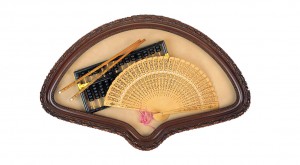 Funeral flower preservation is not about remembering the funeral, but about paying tribute to a beautiful person’s life. Suspended In Time® has extensive experience to help you create a special tribute keepsake that honors your loved one and celebrates life.Call 801-227-0075 to find a dealer near you or to learn how to own your own Franchise.
Funeral flower preservation is not about remembering the funeral, but about paying tribute to a beautiful person’s life. Suspended In Time® has extensive experience to help you create a special tribute keepsake that honors your loved one and celebrates life.Call 801-227-0075 to find a dealer near you or to learn how to own your own Franchise.
Eiffel Tower For a Tribute to a Lovely Girl
Juli Maggio Scott Bronco Wedding Bouquet
This stunning arrangement was done for a wonderful women named Juli. Her and her husband are huge fans of the Denver Broncos (hence the orange and blue colors). You can also see the cute couple sporting jersey’s of their favorite team in their engagement photo inside the shadowbox she chose. This stunning bouquet will last for generations to come in this stylish rustic pine black shadowbox display case that has been custom designed to the couples themed special occasion. Thank you Juli for allowing us to work with you to create this bright memorabilia display that will decorate your home for years to come.
In order to create your own custom designed encasement call us at (801) 227-0075 for more information or to find a dealer near you. Also, find out how to own your own franchise and create these special encampments for those in your own neighborhood.
https://www.suspendedintime.com/
Prom is Almost Here!
![Boutonniere--corsage-ever-after-flor[1] Boutonniere--corsage-ever-after-flor[1]](https://www.suspendedintime.com/blog/wp-content/uploads/2012/04/Boutonniere-corsage-ever-after-flor1-300x230.jpg)
Pretty and Sweet
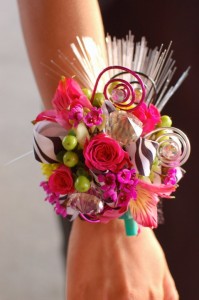
Fun and Flirty
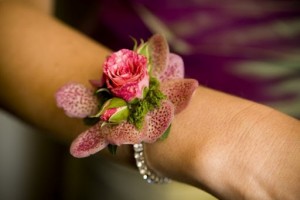
Vintage and Unique
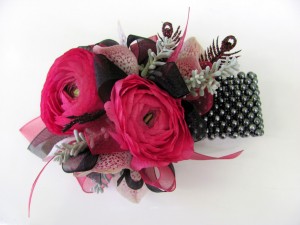
Bold and Beautiful
2015 Women’s Expo Orem April 17th -18th
http ://utahwomensshow.com
://utahwomensshow.com

Come Visit Us At The SHOW! Suspended In Time Flower Preservation call us at (801)227-0075 for more information on becoming a dealer or to find one near you.
on becoming a dealer or to find one near you.
When: Friday and Saturday, April 17-18, 2015
Where: The UCCU Center at UVU in Orem (directions)
Hours: Friday = 10:00 a.m. to 9:00 p.m.
Saturday = 10:00 a.m. to 7:00 p.m.
Tickets : Free online at this site for a limited time
: Free online at this site for a limited time !
!
Also available at Provo Towne Center and at the Riverwoods or at other top sponsors below!
* Fun summer wear & shopping
* Stage Events
* Childrens’s activities
* Hundreds of giveaways and prizes
and prizes
Emily Labrun Bridal Bouquet Encasement
When it comes to personalizing and customizing your display we do our very best to make it just how you are envisioning it. Emily Labrun said this when she picked up this memorable encasement, “The staff was helpful in making sure I got exactly what I wanted. It is beautiful. ” You where great to work with Emily, and we wish you the best in this new adventure in life. If you want to find a dealer near you or want to look into owning your own franchise call (801)227-0075.
Women’s Expo April 18th-19th Free Tickets
We are going to be at THIS WEEKEND’S WOMEN’S EXPO going from April Friday the 18th to Saturday the 19th. Come on down and say hi and check out all the goodies and giveaways going on at the show!
Check out this website to get your free tickets for the up coming Women’s Expo this Friday and Saturday! www.UtahWomensShow.com You all have the free ticket code FREEFORME that you can share with others.
Remake 50th Golden Anniversary Wedding Bouquet
Suspended In Time Flower Preservation
Fun Wedding Facts
Wedding Flowers: Top 10 Wedding Flowers
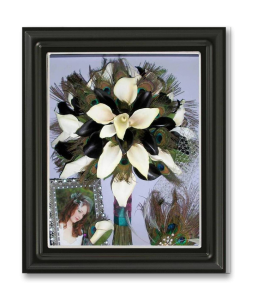 Having trouble picking your flowers from the
thousands of varieties available? Check out our
roundup of favorite wedding blossoms to help you
decide.
Having trouble picking your flowers from the
thousands of varieties available? Check out our
roundup of favorite wedding blossoms to help you
decide.
Picture yourself walking through a glorious garden with every flower at its peak. Which flowers would you pick for your wedding? The commonplace? The colorful? The rarest? Most fragrant? Unscented? Having trouble deciding from the thousands of varieties available? To help you narrow down your bouquet and centerpiece choices before you meet with your florist, we offer this overview of the top 10 most popular wedding flowers.
1. The Rose
Long considered a symbol of beauty and love, the rose figures into many myths and fairy tales. Romantic writers and poets have used the flower as a metaphor for emotion, beauty, passion, and true love throughout the ages. An all-star in the world of weddings, the rose is far from boring, particularly when it comes to color — the rose is available in solid colors and bicolor varieties, and there are striped roses and tipped roses as well. More than three thousand varieties of roses are grown commercially, many available year-round and that are surprisingly affordable. And though roses are associated with luxurious fragrance, not every rose is scented. Three main types are likely candidates for your wedding flowers: hybrid tea roses (the classic, uniformly-shaped commercial roses generally seen at your local florist), spray roses (a rose with five to 10 small heads on each stem and a “natural, garden-grown” look), and garden roses (expensive, old-fashioned varieties with bushy, open heads and delicious scents).
Learn more about roses — the quintessential wedding flower!
2. The Tulip
Although it’s most often associated with the Netherlands, this flower is actually a native of Persia. Representing “consuming love” and “happy years,” the tulip can be a meaningful wedding choice. The flowers are grown in a wide range of colors, including white and cream; pastels like pink, yellow, and peach; and vibrant hues like magenta, red, and purple. Available during much of the year, the most common tulips are very affordable, though rare varieties can be expensive. The versatile tulip can enhance both elegant wedding settings and more casual venues, and work well in almost any permutation — from bouquets to boutonnieres to table arrangements. Three main varieties are commonly used: Dutch tulips (typically seen at neighborhood florist shops and in gardens), French tulips (expensive and elegant, with extra-long stems and large tapered blooms), and parrot tulips (noted for their ruffled, striped petals in intense colors).
3. Calla Lily
Also known as the arum lily, this elegant, trumpet-shaped blossom originated in Africa and symbolizes “magnificent beauty” in the language of flowers. The calla lily’s distinctive form has been depicted in Art Nouveau and Art Deco works, in addition to twentieth-century photography. Two types are commonly available: a large-headed variety with a long, smooth stem and suitable for tall arrangements or presentation-style bouquets, and a miniature version ideal for nosegays and boutonnieres. Creamy ivory is the most popular color, but calla lilies also come in yellow, orange, mauve-pink, and dark purple.
4. Lily of the Valley
With bell-shape florets dangling from a thin stem, the lily of the valley is sometimes called “the ladder to heaven.” The fresh, perfumed scent from its tiny flowers is unmistakable. In Norse mythology, the flower is linked to Ostara, the goddess of springtime, and while most plentiful during this season, it remains available — and very expensive — most of the year. So while a fistful of lily of the valley might be your dream, a more affordable alternative may be to use just a few stems to infuse a bouquet or centerpiece with its wonderful fragrance. Most people know of the white variety, but lily of the valley also comes in a very rare rosy-pink.
5. Hydrangeas
With its big bushy head and intense shades of pink, blue, burgundy, and purple, it’s no wonder that the hydrangea represented “vanity” in the Victorian language of flowers. One of the most popular varieties changes in color as it grows from bubble-gum pink to sky blue, depending on the acid level of the soil. A stem or two of this moderately priced, scentless shrub flower helps fill out arrangements and bouquets, and a few sprigs make a charming boutonniere. You’ll find the hydrangea in white and shades of green, pink, burgundy, and blue.
6. The Peony
The peony has a large, full head, strong perfume, and bright color. But despite this outward showiness, the flower acquired the Victorian meaning “bashfulness.” Cultivated in Asia for more than a thousand years and developed further by the French, the peony is available in two main types, the herbaceous and the tree peony (the latter’s flowers do not last as long when cut). A bouquet made solely of peonies can be gorgeous; the flower can also be used to create beautiful centerpieces and arrangements. Grown in single- and double-flower styles, this expensive bloom is seasonally available from late spring to early summer but can be imported in the fall.
7. Ranunculus
Looking for a cost-effective alternative to roses or peonies? Try the lush, multi-petaled ranunculus, a relative of the buttercup. First seen by Westerners in the Far East around the thirteenth century, this mild-scented flower features several blossoms on a stem with fernlike foliage. To carry ranunculus is to tell your partner, in the Victorian language of flowers, “I am dazzled by your charms.” A natural for the bridal bouquet or bridesmaid nosegays, the ranunculus also makes a whimsical boutonniere and is available in many colors including white, yellow, orange, and pink.
8. Stephanotis
The Victorian meaning for this flower is “marital happiness,” making the dainty white Stephanotis an obvious choice for weddings. The star-shape, waxy florets actually grow on a flowering vine; each must be individually wired or placed onto a special holder before it can be arranged. A bouquet of stephanotis blossoms is one of the most traditional a bride can carry, and a stephanotis boutonniere is a classic choice for a formal wedding. Mildly scented, moderately priced, and available year-round.
9. Sweet Peas
The sweet pea, which signifies “lasting pleasure,” was first brought to England from Sicily in 1699, and the English have had a love affair with this delicate flower ever since. Its candy-like scent and ruffled blossoms make this an old-fashioned favorite in bouquets for the bride and her bridesmaids. The sweet pea’s many colors range from white to intense pinks and purples, and its scent can be strong and sweet.
10. The Gardenia
Surrounded by dark green, waxy leaves, the exquisite gardenia exudes a sultry, heavy scent. It was this intoxicating fragrance that captivated an English sea captain traveling through South Africa in 1754, prompting him to bring home one of the native plants as a souvenir. Gardenias are lovely tucked into a bouquet or floating in a low bowl as a centerpiece, and a single gardenia makes a wonderful scented corsage. But be gentle: the delicate, creamy ivory petals of this expensive flower can bruise easily. Large three- to four-inch blossoms, as well as a miniature variety, are available.
Adapted from The Knot Book of Wedding Flowers (Chronicle Books, 2002).
— The Knot
Read more: Wedding Flowers: Top 10 Wedding FlowersTheKnot.com – https://wedding.theknot.com/wedding-planning/wedding-flowers/articles/top-10-wedding-flowers.aspx#ixzz2Yi8LZPPj
https://wedding.theknot.com/wedding-planning/wedding-flowers/articles/top-10-wedding-flowers.aspx
HAVE A GREAT 4TH OF JULY!
Variously known as the Fourth of July and Independence Day, July 4th has been a federal holiday in the United States since 1941, but the tradition of Independence Day celebrations goes back to the 18th century and the American Revolution (1775-83). In June 1776, representatives of the 13 colonies then fighting in the revolutionary struggle weighed a resolution that would declare their independence from Great Britain. On July 2nd, the Continental Congress voted in favor of independence, and two days later its delegates adopted the Declaration of Independence, a historic document drafted by Thomas Jefferson. From 1776 until the present day, July 4th has been celebrated as the birth of American independence, with typical festivities ranging from fireworks, parades and concerts to more casual family gatherings and barbecues.
The Birth of American Independence
When the initial battles in the Revolutionary War broke out in April 1775, few colonists desired complete independence from Great Britain, and those who did were considered radical. By the middle of the following year, however, many more colonists had come to favor independence, thanks to growing hostility against Britain and the spread of revolutionary sentiments such as those expressed in Thomas Paine’s bestselling pamphlet “Common Sense,” published in early 1776. On June 7, when the Continental Congress met at the Pennsylvania State House (later Independence Hall) in Philadelphia, the Virginia delegate Richard Henry Lee introduced a motion calling for the colonies’ independence. Amid heated debate, Congress postponed the vote on Lee’s resolution, but appointed a five-man committee–including Thomas Jefferson of Virginia, John Adams of Massachusetts, Roger Sherman of Connecticut, Benjamin Franklin of Pennsylvania and Robert R. Livingston of New York–to draft a formal statement justifying the break with Great Britain.
On July 2nd, the Continental Congress voted in favor of Lee’s resolution for independence in a near-unanimous vote (the New York delegation abstained, but later voted affirmatively). On that day, John Adams wrote to his wife Abigail that July 2 “will be celebrated, by succeeding Generations, as the great anniversary Festival” and that the celebration should include “Pomp and Parade…Games, Sports, Guns, Bells, Bonfires and Illuminations from one End of this Continent to the other.” On July 4th, the Congress formally adopted the Declaration of Independence, which had been written largely by Jefferson. Though the vote for actual independence took place on July 2nd, from then on the 4th became the day that was celebrated as the birth of American independence.
Early Fourth of July Celebrations
In the pre-Revolutionary years, colonists had held annual celebrations of the king’s birthday, which traditionally included the ringing of bells, bonfires, processions and speechmaking. By contrast, during the summer of 1776 some colonists celebrated the birth of independence by holding mock funerals for King George III, as a way of symbolizing the end of the monarchy’s hold on America and the triumph of liberty. Festivities including concerts, bonfires, parades and the firing of cannons and muskets usually accompanied the first public readings of the Declaration of Independence, beginning immediately after its adoption. Philadelphia held the first annual commemoration of independence on July 4, 1777, while Congress was still occupied with the ongoing war. George Washington issued double rations of rum to all his soldiers to mark the anniversary of independence in 1778, and in 1781, several months before the key American victory at Yorktown, Massachusetts became the first state to make July 4th an official state holiday.
After the Revolutionary War, Americans continued to commemorate Independence Day every year, in celebrations that allowed the new nation’s emerging political leaders to address citizens and create a feeling of unity. By the last decade of the 18th century, the two major political parties–Federalists and Democratic-Republicans–that had arisen began holding separate Independence Day celebrations in many large cities.
July 4th Becomes A National Holiday
The tradition of patriotic celebration became even more widespread after the War of 1812, in which the United States again faced Great Britain. In 1870, the U.S. Congress made July 4th a federal holiday; in 1941, the provision was expanded to grant a paid holiday to all federal employees. Over the years, the political importance of the holiday would decline, but Independence Day remained an important national holiday and a symbol of patriotism.
Falling in mid-summer, the Fourth of July has since the late 19th century become a major focus of leisure activities and a common occasion for family get-togethers, often involving fireworks and outdoor barbecues. The most common symbol of the holiday is the American flag, and a common musical accompaniment is “The Star-Spangled Banner,” the national anthem of the United States.
6 bridal bouquet ideas
6 bridal bouquet ideas
© Watson Studios Photography / The KnotWatch Full Movie Online Streaming Online and Download
-
Resources from TheKnot.com
It’s true: We’ve come a long way from the days when brides carried bouquets down the aisle to ward off evil spirits (yes, that’s how the tradition started).
Though some trends have blossomed and others have wilted, one thing remains true: Flowers are a great way to make a highly personal statement, whether it’s a bloom’s more abstract Victorian meaning or just that it comes in your favorite color. Here are six easy ways to draw inspiration for your bouquets.
Tip 1: Channel History
Ever wonder why many brides carry stephanotis in their wedding bouquets (besides the fact that the flowers are so unique and gorgeous)? These creamy, star-shape florets carry a symbolic meaning of happiness in marriage.
Says who, you ask? Many such floral traditions are rooted in the conservative Victorian era, when every flower was given a symbolic meaning so that men could express their sentiments without words. Armed with a new edict, men began courting ladies not with love letters or serenades but with bouquets — and soon a lady receiving coral-color roses knew her suitor was expressing the first signs of desire, while a young maiden receiving a dainty cluster of violets might blush at the notion that her secret admirer had expressed his faithfulness to her. Learn the meanings of these popular wedding flowers and incorporate a little bit of history into your wedding day.
Here are a few of our favorites to get you started:
– lily of the valley = happiness
– calla lily = beauty
– freesia = innocence
– gardenia = joy
– orchid = love
– lilac = first signs of love
– anemone = expectation
More from The Knot: 15 flower mistakes to avoid
Tip 2: Color-Code It
Choosing colorful flowers that match your wedding palette is an obvious way to personalize your bouquet. But just because you’ve picked a pretty green-and-purple combo for your wedding, doesn’t mean your flowers need to scream eggplant!
Colorful adornments — from ribbons and fabric to beads and baubles — will make any bouquet meaningful. We love going with monochromatic blooms and bringing in color through the shape — and shade — of unusual additions, such as dark, rich berries, brilliant green succulents, or even jewel-tone sugared grapes.
Other examples: Do as the Romans did in times of celebration and add stalks of herbs to your bouquet, such as sweet-scented, pale purple lavender. Or take a bundle of typical white wedding blooms, like stephanotis or calla lilies, and tie the bouquet with a green wrap secured with a purple snap or button. You might even string purple- and green-accented paper cranes (for good luck) from your bouquet.
Tip 3: Check Backgrounds
Flowers can speak louder than vows — in all the pictures, at least. Another way to personalize is to choose flowers that match your personalities or are expressive of your backgrounds and beliefs.
For instance, you may choose to give a nod to his Norwegian heritage by including purple heather — Norway’s signature flower — in your bouquet and on the guys’ boutonnieres. Or you might pair your birth-month blooms like lily of the valley with chrysanthemum, because he was born in May and you in November. Or maybe your bedroom is always awash in tulips — your favorite bloom (a good choice, as they represent “consuming love”). Include these (you’ll find them mainly in three popular varieties — French, Dutch, and Parrot — though there are 3,000 varieties) in your bouquet. Did he propose while you were road-tripping in Georgia? Consider carrying a nosegay of peach-hued roses.
Tip 4: Keep It In The Family
Delve into your own family history and elevate the personal factor of your bouquet. Give your wedding flowers a homegrown flair by picking peonies from your mother’s garden; or you may choose to carry a cluster of white French tulips because your mother did so, as did her mother and her mother’s mother.
There are also less obvious ways to incorporate familial elements into your bouquet: Wrap the stems of your flowers in your favorite fabric topped off with your grandmother’s vintage hat pin, or create a bouquet wrap from an heirloom silk scarf. (Remember though, fabrics may be damaged by water and pins). Consider threading a relative’s pearls around soft rose petals to add sophistication to your wedding; or simply your the florist to take silk ribbons monogrammed with both of your initials and loop them through the bouquet.
More from The Knot: Unexpected flower ideas
Tip 5: Remember To Remember
Keeping in sync with your fiance and your bridesmaids will help you pick personalized flowers. Start by recalling a favorite date that you and your fiance had. Was it the time you enjoyed an afternoon picnic in the park and he brought along a bouquet of your favorite flower — daffodils — to commemorate the occasion? Consider carrying these blooms down the aisle. Or maybe he brought you daisies for your first date? Make sure your bouquet is bursting with them. Is his favorite eau de toilet that you wear lavender scented? Ask your florist to incorporate sprigs of sweet-scented lavender into your bouquet and onto his boutonniere. You might even ask your attendants what their favorite flowers are — you could include each of their favorites into your own arrangement.
Tip 6: Use Your Environment
Gather inspiration from the everyday elements around you. Some fresh takes: Dress a bouquet with faux freshwater pearls because you’re marrying at the beach, or dot your arrangement with small fruits for a touch of spring (we love kumquats, lemons, even cherries). Is your fall fete taking place in a botanical garden of sorts? A motif like butterflies might be an appropriate thread for your details — let ceramic or fabric ones peek out from behind the flower petals as a nod to the season. We’ve planted the seed — you’ll need to take it from here.
— Allison Micarelli
© 2013 The Knot. All rights reserved.
Karli White Bridal Bouquet-Before and After Flower Preservation
Unique Wedding Bouquets
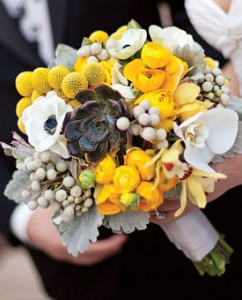
Adding yellow Billy Balls to your bouquet makes it look fun and artistic
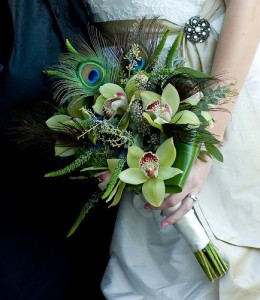
Peacock feathers are becoming really popular this year. They add a beautiful vintage look to your bouquet.
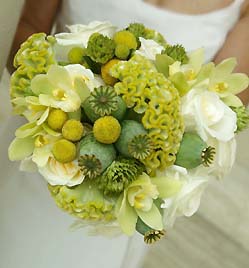
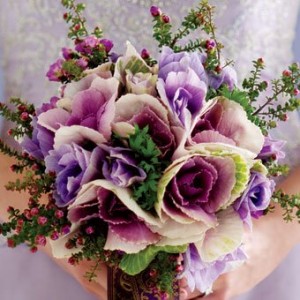
Who would have thought that using ornamental cabbage in a wedding bouquet would look so beautiful?
Love your bouquet so much that you never want to throw it away? Bring it in to Suspended In Time(R) and have it preserved and put into a beautiful encasement so you can have it forever!
